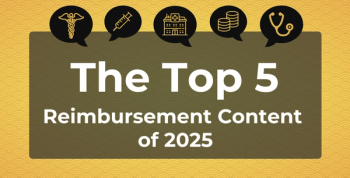
Can an HIV Drug Help Prevent Diabetes?
Patients who received anti-inflammasome nucleoside reverse-transcriptase inhibitors (NRTIs)—drugs approved to treat HIV-1 and hepatitis B infections—exhibited a 33% reduced risk of developing type 2 diabetes (T2D), according to a meta-analysis published in Nature Communications.
Patients who received anti-inflammasome nucleoside reverse-transcriptase inhibitors (NRTIs)—drugs approved to treat
Nearly 500 million individuals around the globe currently have diabetes, while that number is expected to dramatically grow in the coming decades. The majority of individuals with the disease also have T2D.
“Chronic inflammation is a critical facet of T2D,” authors wrote. “The NLRP3 inflammasome, a multimeric protein complex, is implicated as a key driver of T2D.” In addition, inflammasome activation is observed in circulating cells and adipose tissue of patients who exhibit insulin resistance.
Because NRTIs inhibit viral reverse-transcriptases and LINE-1 reverse-transcriptase activity, and block inflammasome activation by Alu RNAs, researchers sought to determine whether there is a relation between NRTIs and development of T2D among patients with HIV-1 or hepatitis B.
Using data from the Veterans Health Administration database, researchers analyzed the information of 79,744 men with confirmed diagnoses of HIV or hepatitis B over a 17-year period. To confirm findings, investigators also studied 4 separate health insurance databases, making the total study population 128,861 patients.
Any individual with pre-existing diabetes was excluded from the study. Overall, researchers found the adjusted risk of incident diabetes was 33% lower in patients exposed to NRTI (adjusted hazard ratio [HR] for NRTI exposure, 0.673; 95% confidence interval [CI], 0.638 to 0.710; P < .0001; 95% prediction interval, 0.618 to 0.734).
Additional analyses found:
- Of those included in the Veterans Health Administration database (n = 79,744), 12,311 patients developed incident T2D; after adjustment for potential confounders, users of NRTIs had 34% reduced hazard of developing T2D (HR, 0.665; 95% CI, 0.625 to 0.708; P < .0001)
- In the Truven database (n = 23,634), which was comprised of employer-based health insurance claims, 1630 patients developed incident T2D; after adjustment for potential confounders, users of NRTIs had 39% reduced hazard of developing T2D (HR 0.614; 95% CI, 0.524–0.718; P < .0001)
- In the PearlDiver database (n = 16,045), which was comprised of predominantly private health insurance claims, 1068 patients developed incident T2D; after adjustment for potential confounders, users of NRTIs had 26% reduced hazard of developing T2D (HR, 0.738; 95% CI, 0.600–0.908; P = .004)
- In the Medicare 20% sample (n = 3097), 707 patients developed incident T2D; after adjustment for confounders users of NRTIs had a 17% reduced hazard of developing T2D (HR, 0.828; 95% CI 0.646–1.062; P = .137)
- In the Clinformatics dataset (n = 6341), made up of predominately commercial health insurance claims, 1067 patients developed incident T2D; after adjustment for potential confounders, users of NRTIs had 27% reduced hazard of developing T2D (HR, 0.727; 95% CI, 0.572–0.924; P = .009)
“The fact that the protective effect against the development of diabetes was replicated in multiple databases in studies from multiple institutions enhances confidence in the results,"
Researchers followed the primary analyses with Bayesian meta-analyses, sensitivity analyses, continuous exposure modeling, falsification testing, and a propensity score matching analysis.
However, because the insurance claims analyzed did not include information on diet, physical activity, and stress, theses variables may have had an influence on patients’ development of diabetes, marking a limitation to the study.
“Repurposing of existing drugs is an urgent priority for revitalizing, accelerating and optimizing drug development,” researchers wrote. But due to the absence of prospective randomized clinical trials on the subject, authors caution against advocating the use of NRTIs in those with prediabetes or diabetes.
“Cost-benefit analyses of the future utilization of NRTIs following prospective evaluation should include consideration of their potential for inducing viral resistance as well as how they compare to certain diets and exercise regimens, which can benefit individuals with prediabetes,” they conclude.
Reference
Ambati J, Magagnoli J, Leung H, et al. Repurposing anti-inflammasome NRTIs for improving insulin sensitivity and reducing type 2 diabetes development. Nat Commun. Published Online September 23, 2020. doi:10.1038/s41467-020-18528-z
Newsletter
Stay ahead of policy, cost, and value—subscribe to AJMC for expert insights at the intersection of clinical care and health economics.








